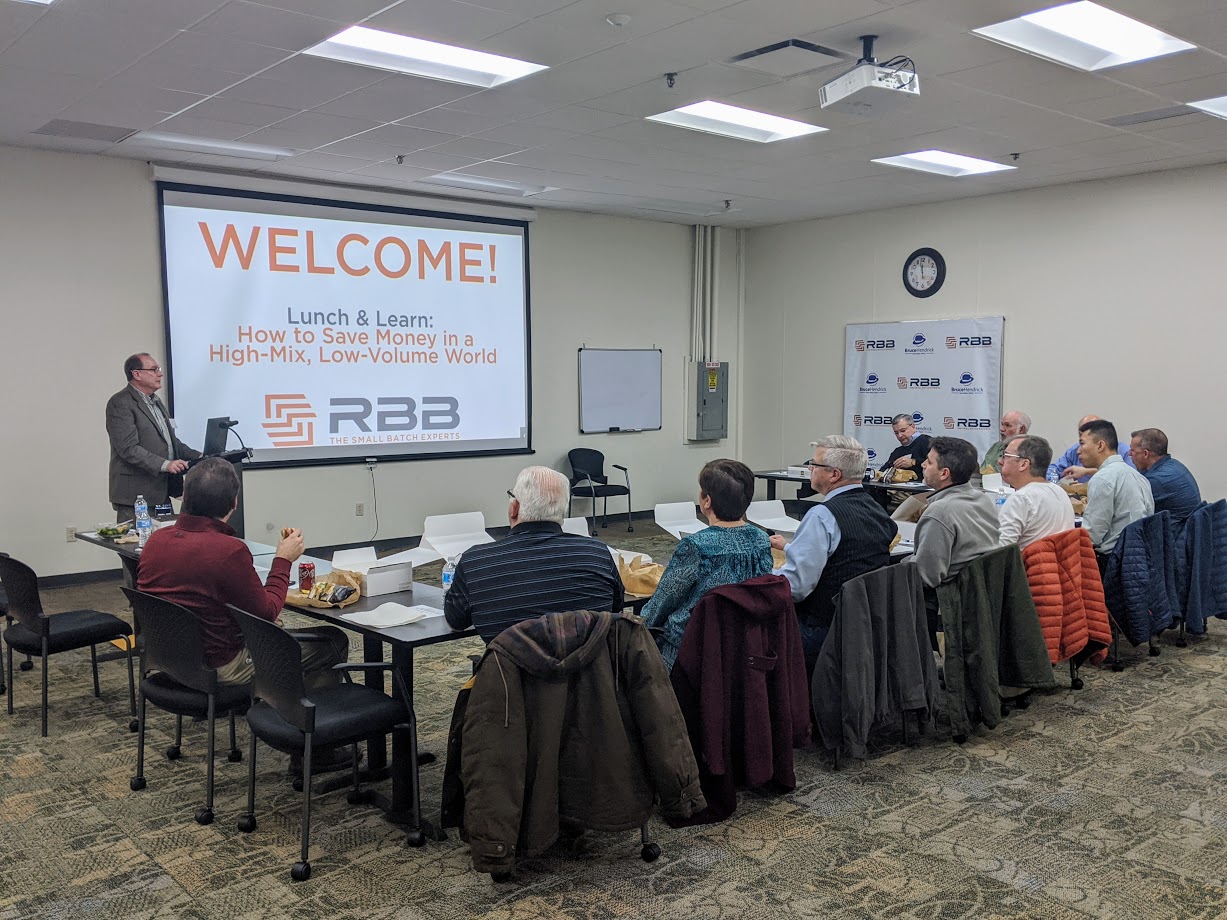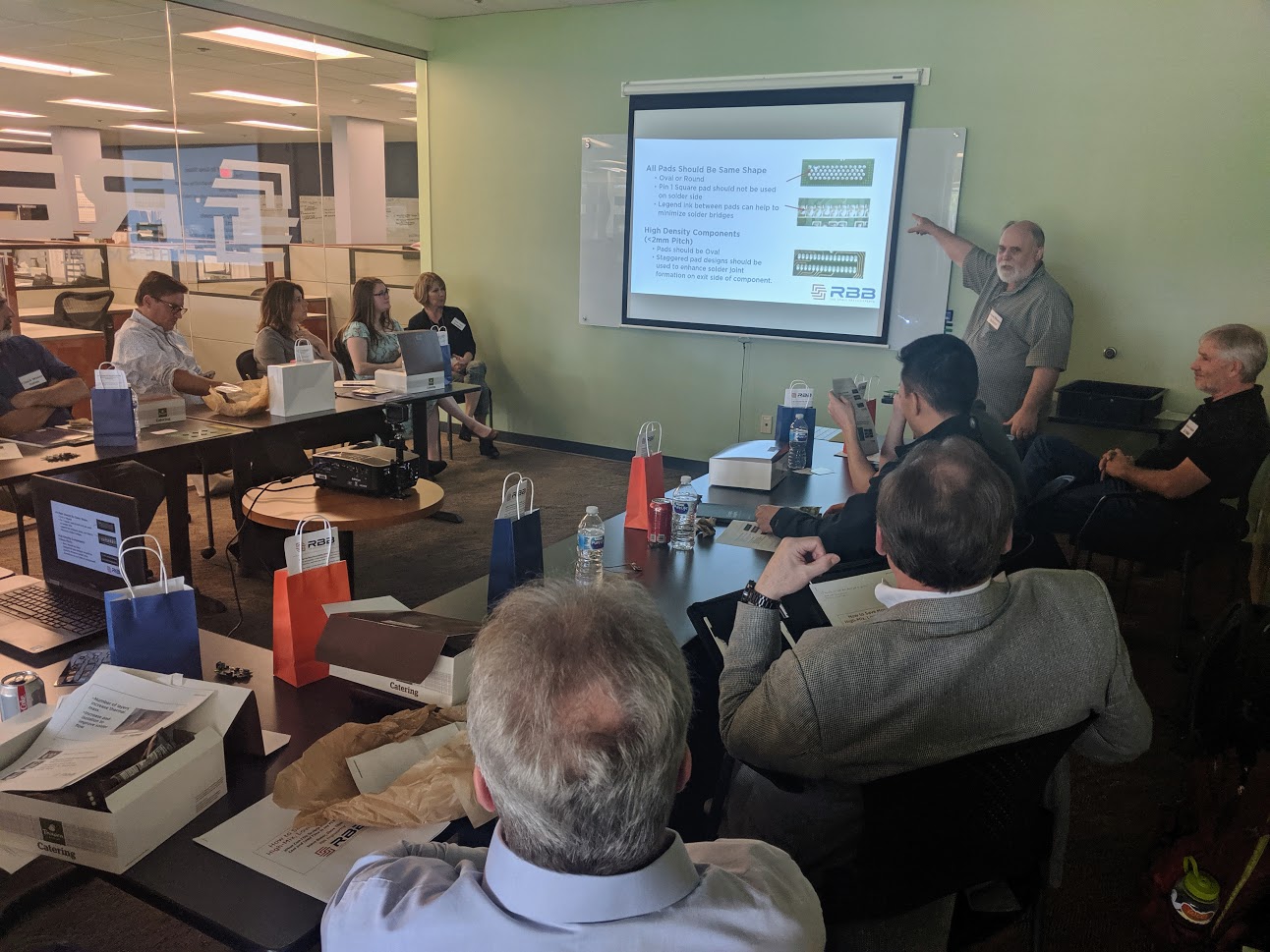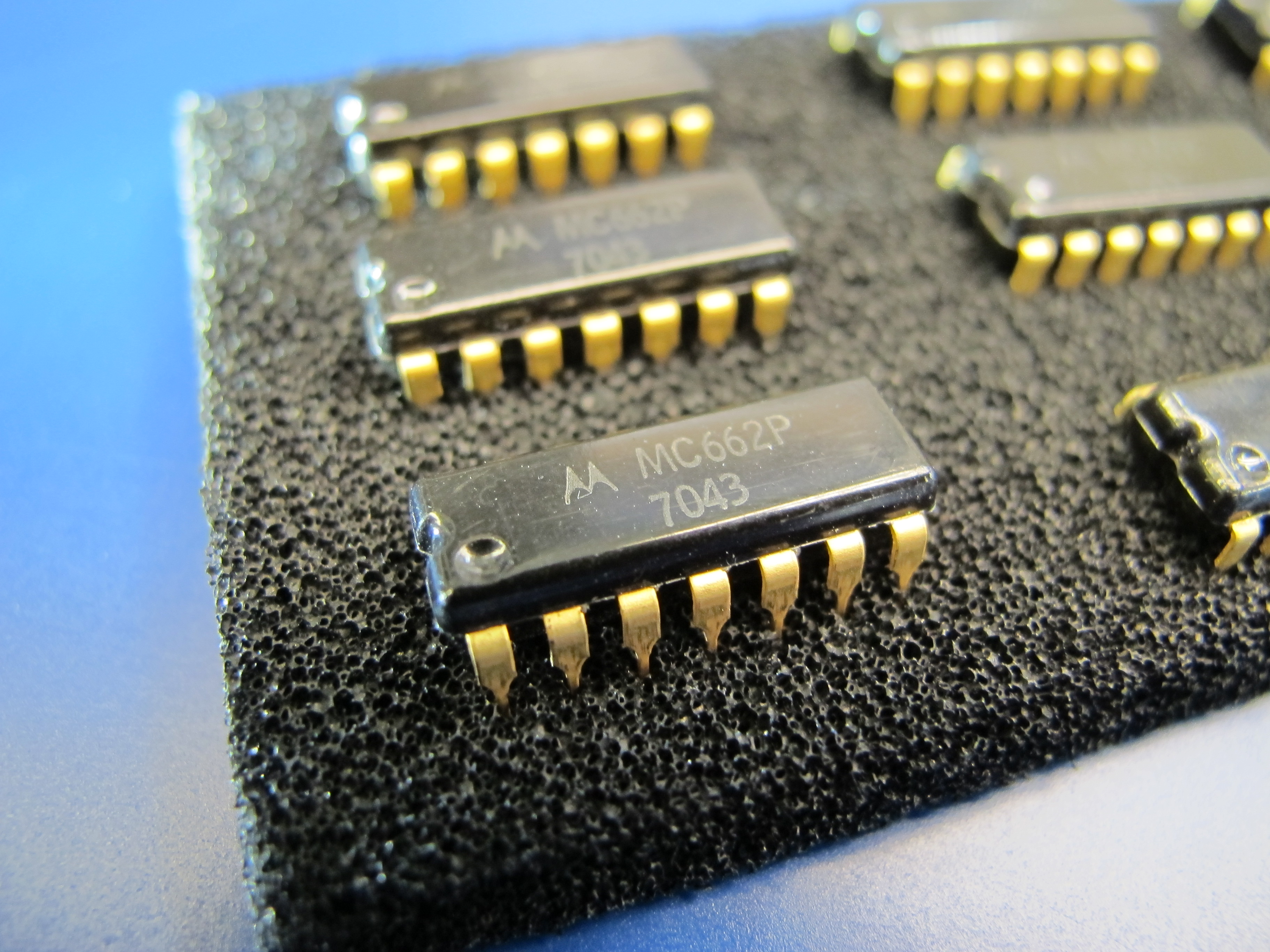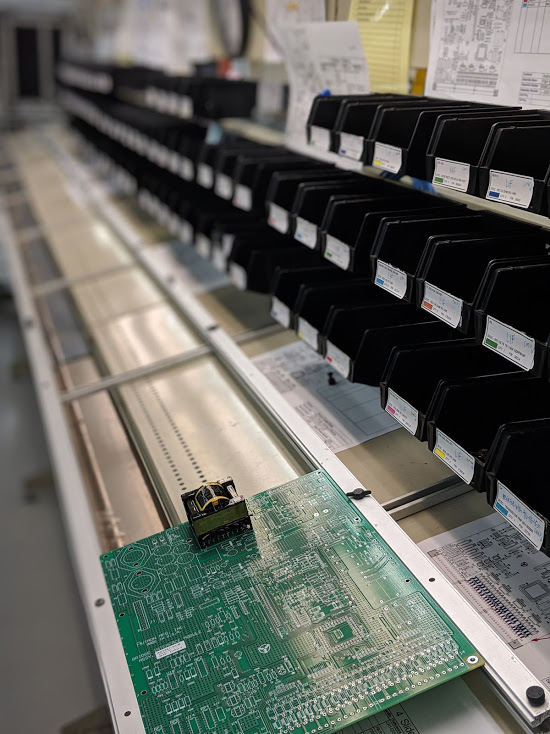We have already hosted two great sessions in our 2019-2020 Lunch & Learn series, "How to Save Money in a High-Mix, Low-Volume World." Due to the current situation, our next session will be held in July via Zoom. This session, titled How to Reduce Bare Board (PCB) Costs, will be presented by Jim Thompson & Bob Keisler from National Technology Inc. Jim & Bob will examine board design, cost drivers, and other factors to consider when designing your product.
"How to Save Money in a High-Mix, Low-Volume World"
While our team continues to swarm to get our clients what they need when they need it- RBB has decided to postpone our April lunch & learn session to July 28, 2020. This session is titled How to Reduce Bare Board (PCB) Costs, will be presented by Jim Thompson & Bob Keisler from National Technology Inc. Jim & Bob will examine board design, cost drivers, and other factors to consider when designing your product. This is the third part of our series, "How to Save Money in a High-Mix, Low-Volume World."
All are welcome to attend- please pass this invitation to your team members & colleagues!
The overall goal of this series will be to educate RBB's partners on how to save money in our high-mix, low-volume PCBA (Printed Circuit Board Assembly) industry. Each session includes a hands-on presentation from RBB team members or suppliers, FREE lunch, questions & networking, and a facility tour.
"How to Save Money in a High-Mix, Low-Volume World"
RBB has already hosted two great sessions in our 2019-2020 Lunch & Learn series, "How to Save Money in a High-Mix, Low-Volume World." In our January Lunch & Learn, Norm Lelless of Future Electronics spoke about Industry Trends in the High-Mix, Low-Volume World. Here is a little summary of what Norm brought to the table:
"How to Save Money in a High-Mix, Low-Volume World"
After a great first session in October, preparations are underway for the second installment of RBB's 2019-2020 Lunch & Learn series. This session, Current Industry Trends in the Low-Volume World, will be presented by Norm Lelless of Future Electronics.
All are welcome to attend- please pass this invitation to your team members & colleagues!
The overall goal of this series will be to educate RBB's partners on how to save money in our high-mix, low-volume PCBA industry. Each session includes a hands-on presentation from RBB team members or suppliers, FREE lunch, networking, and a facility tour.
Unlike companies who move all at once from one product generation to the next, many OEMs base their value and reputation on customizing their product offerings to various clients and applications. It’s in their DNA to tweak and expand designs to deliver exactly what their customers need.
This strategy can be very effective, but can come with a natural consequence: a wide portfolio of legacy products that require active support for many years.
Fortunately, the right contract manufacturing partner can help meet the challenges that come with legacy products. Here are some examples of some of those challenges.
"How to Save Money in a High-Mix, Low-Volume World"
After a great first session, preparations are underway for the second RBB will host a four-part lunch & learn series quarterly in 2019-2020. The goal of this series will be to educate RBB's partners on how to save money in our high-mix, low-volume PCBA industry. Each session includes a hands-on presentation from RBB team members or suppliers, FREE lunch, networking, and a facility tour.
All are welcome to attend- please pass this invitation to your team members & colleagues!
In the EMS industry, the term high-mix, low-volume (HMLV) refers to CMs or OEMs who change over production between assemblies and processes much more often than their low-mix, high-volume (LMHV) counterparts. HMLV shops convert their lines to different assemblies rapidly (hours or minutes) and frequently (several shifts or days). Note that the opportunity for error rises as batch size decreases.
By contrast, LMHV production runs can last weeks or even months between change overs. It’s a different animal altogether.
RBB builds many hundreds of unique assemblies annually and most weeks introduces multiple new assemblies. It's rare that RBB runs a batch large enough to consume an entire shift of time, much less a few shifts!











